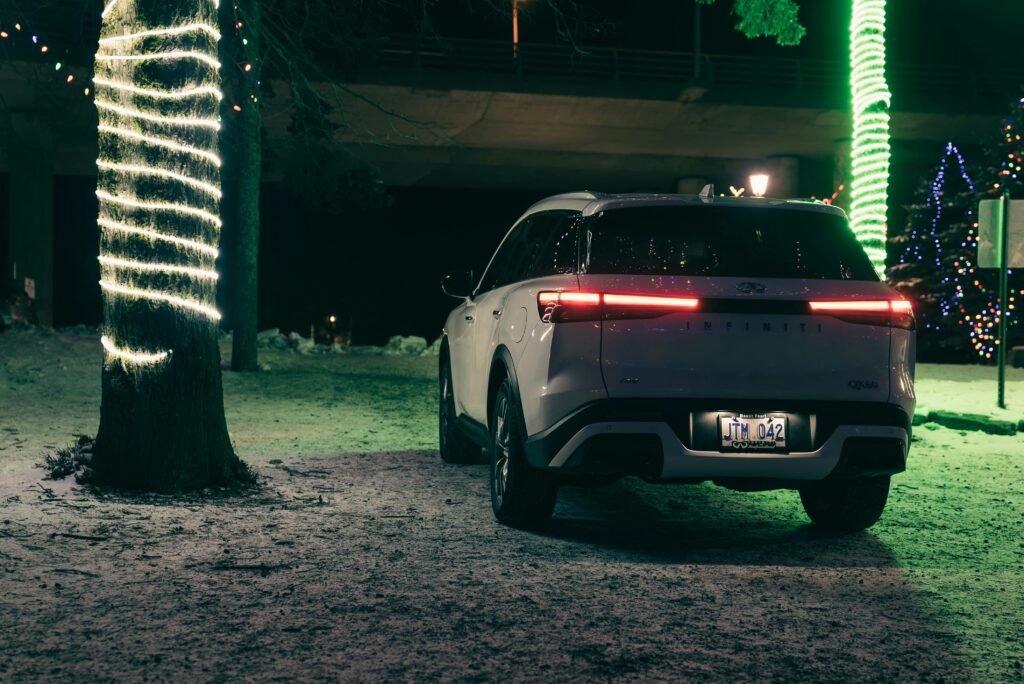Curious about the energy consumption of your portable ice machine? You’ve come to the right place! In this article, we’ll delve into the details of whether these handy appliances are significant energy hogs or surprisingly efficient. By the end, you’ll have a clear understanding of how much electricity your portable ice machine really uses and tips on how to keep your energy bills in check. Have you ever wondered whether portable ice machines guzzle electricity like there’s no tomorrow? I mean, they’re small and convenient, sure, but are they secretly driving up your electricity bill every time they churn out those lovely, frosty cubes?

Understanding Portable Ice Machines
Before we dive headfirst into the deep freeze of electricity consumption, let’s take a step back and understand what these marvels of modern convenience are all about. Portable ice machines are compact, counter-top devices designed to produce ice quickly and efficiently, making them perfect for parties, camping trips, or whenever you need a steady supply of ice without the bulk of a full-sized freezer.
How Do Portable Ice Machines Work?
Portable ice machines operate on a relatively straightforward principle. They contain a small water reservoir, a refrigeration unit, and an ice mold. Here’s a simplified breakdown of the process:
- Fill the Reservoir: First, you add water to the machine’s reservoir.
- Cooling: The refrigeration unit kicks in, cooling the ice mold.
- Freezing: Water is pumped into the mold where it freezes relatively quickly.
- Harvesting: Once the ice cubes or nuggets are frozen, they are released into the storage bin, ready for use.
- Repeat: The cycle continues until the reservoir runs dry or you turn off the machine.
Sounds simple, right? But the ease of use often leads to the question of energy consumption—just how energy-efficient is this appliance?
Evaluating Energy Consumption
Key Factors that Affect Energy Usage
There are a few crucial factors that determine how much electricity a portable ice machine will consume. Understanding these will help you gauge whether it’s an energy hog or a modest sipper.
Wattage
Wattage is a measure of electrical power. The higher the wattage, the more electricity the device uses. Portable ice machines typically have a wattage range from 100 to 200 watts when actively making ice. Sounds not too bad, right? But the real question is, how often does it need to run, and for how long?
Run Time
Run time refers to how long the machine operates to produce a batch of ice. If you ask your ice machine to pump out cube after cube 24/7, you’re obviously going to see a spike in your electricity bill. On average, these machines take about 6 to 15 minutes to produce a batch of ice. Most units will cycle on and off as needed to keep up with demand and maintain a stockpile in the bin.
Idle Consumption
Just like you, your ice machine needs a break too. Fortunately, these devices do have lower power consumption when they’re not actively freezing water but are instead maintaining the ice or waiting for more ice orders from you. However, they still draw some power in this state.
Energy Consumption Formula
To get a better grip on the actual energy usage, let’s whip out a quick math equation:
[ \text = \frac{\text \times \text} ]
So, if you have a 150-watt machine running for 24 hours a day:
[ \frac \times 24 , \text} = 3.6 , \text ]
That might seem like a lot, but remember, this scenario assumes your machine is running non-stop.
Practical Example
Let’s break it down even further, shall we? Imagine you have an ice machine that’s on for 6 hours a day at 150 watts. Here’s how the numbers play out:
-
Daily Consumption: [ \frac \times 6 , \text} = 0.9 , \text ]
-
Monthly Consumption: [ 0.9 , \text \times 30 , \text = 27 , \text ]
So, while it won’t be negligible, it’s not exactly astronomical either.
Comparing with Other Appliances
Energy Use Comparison Table
To offer some perspective, let’s compare the energy consumption of portable ice machines with other common household appliances.
| Appliance | Average Wattage (W) | Estimated Use (Hrs/Day) | Daily Energy Use (kWh) | Monthly Energy Use (kWh) |
|---|---|---|---|---|
| Portable Ice Machine | 150 | 6 | 0.9 | 27 |
| Refrigerator | 150 | 24 | 3.6 | 108 |
| Microwave | 1000 | 0.5 | 0.5 | 15 |
| Coffee Maker | 900 | 0.5 | 0.45 | 13.5 |
| Laptop | 60 | 8 | 0.48 | 14.4 |
From this table, you can see that portable ice machines use less electricity than your refrigerator and are comparable to other smaller appliances used sparingly, like a microwave or coffee maker. Yet, they do use more electricity than a laptop, for instance.
Energy-Efficient Tips
Worried about racking up a high electricity bill? There are several ways you can optimize your portable ice machine for better energy efficiency.
Choose the Right Size
Selecting a portable ice machine that suits your actual needs can make a significant difference. A larger machine producing more ice than you need will consume more energy unnecessarily.
Unplug When Not in Use
If you only need ice sporadically, one of the simplest things you can do is unplug the machine when it’s not in use. Machines continue to use a small amount of electricity even when idle, so unplugging can be a quick and effective energy saver.
Regular Maintenance
Keep your machine well-maintained. A clean and well-functioning machine operates more efficiently. Regularly descale your machine and ensure it’s free from clogs and build-ups.
Optimize Placement
Location, location, location. Placing your ice machine in a cool, well-ventilated area can improve efficiency. If it’s surrounded by other appliances that emit heat, it’ll have to work harder (and use more electricity) to chill the water.

Environmental Impact
Carbon Footprint
Okay, you care about your wallet, but what about the environment? The energy consumed by any appliance contributes to your carbon footprint. If you’re keen on being eco-friendly, knowing how to mitigate the environmental impact is just as crucial.
Using Renewable Energy Sources
If you have solar panels or another form of renewable energy in your home, your ice machine’s electricity consumption will have less of a carbon footprint. It’s a win-win—for you and Mother Earth.
Future Trends
Advancements in Energy Efficiency
Technology is ever-evolving. Already, manufacturers are focusing on creating more energy-efficient products, including portable ice machines. Features like better insulation, faster freezing cycles, and smart energy management systems are on the horizon.
Smart Ice Machines
Imagine a world where your ice machine communicates with you through your smartphone, optimizing its energy use based on your patterns and needs. That’s not far off. Smart technology in home appliances allows for better energy management and thus lower consumption.

Conclusion
So, do portable ice machines use a lot of electricity? The short answer is: not really, especially when you consider their convenience and the alternatives. Like any other appliance, their energy consumption depends on various factors, including usage patterns, wattage, and efficiency. With the right tips and a little bit of mindfulness, you can enjoy your frosty refreshments without too much worry about your electricity bill or your carbon footprint.
Isn’t it comforting to know you can have your ice—and keep your cool about energy consumption too?



